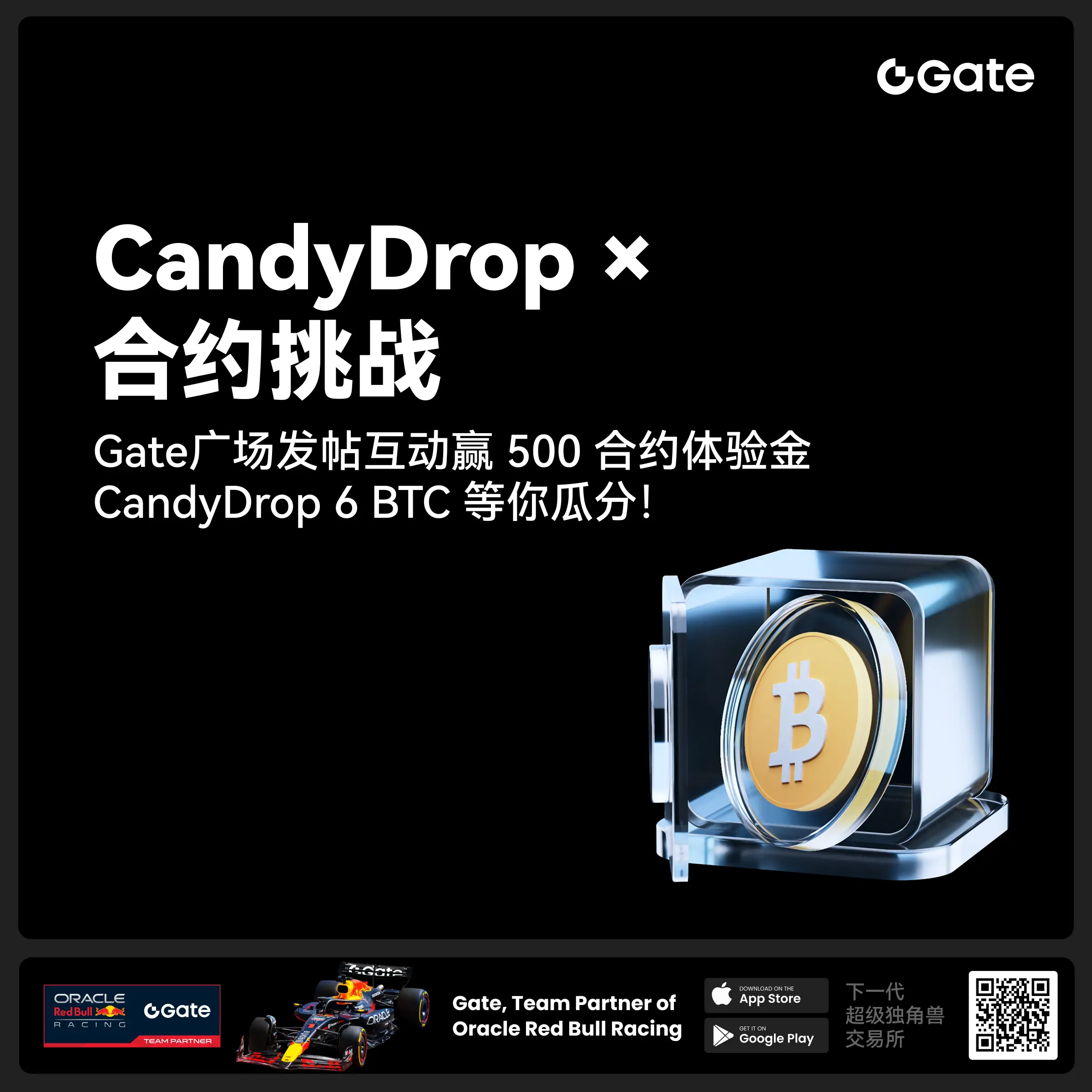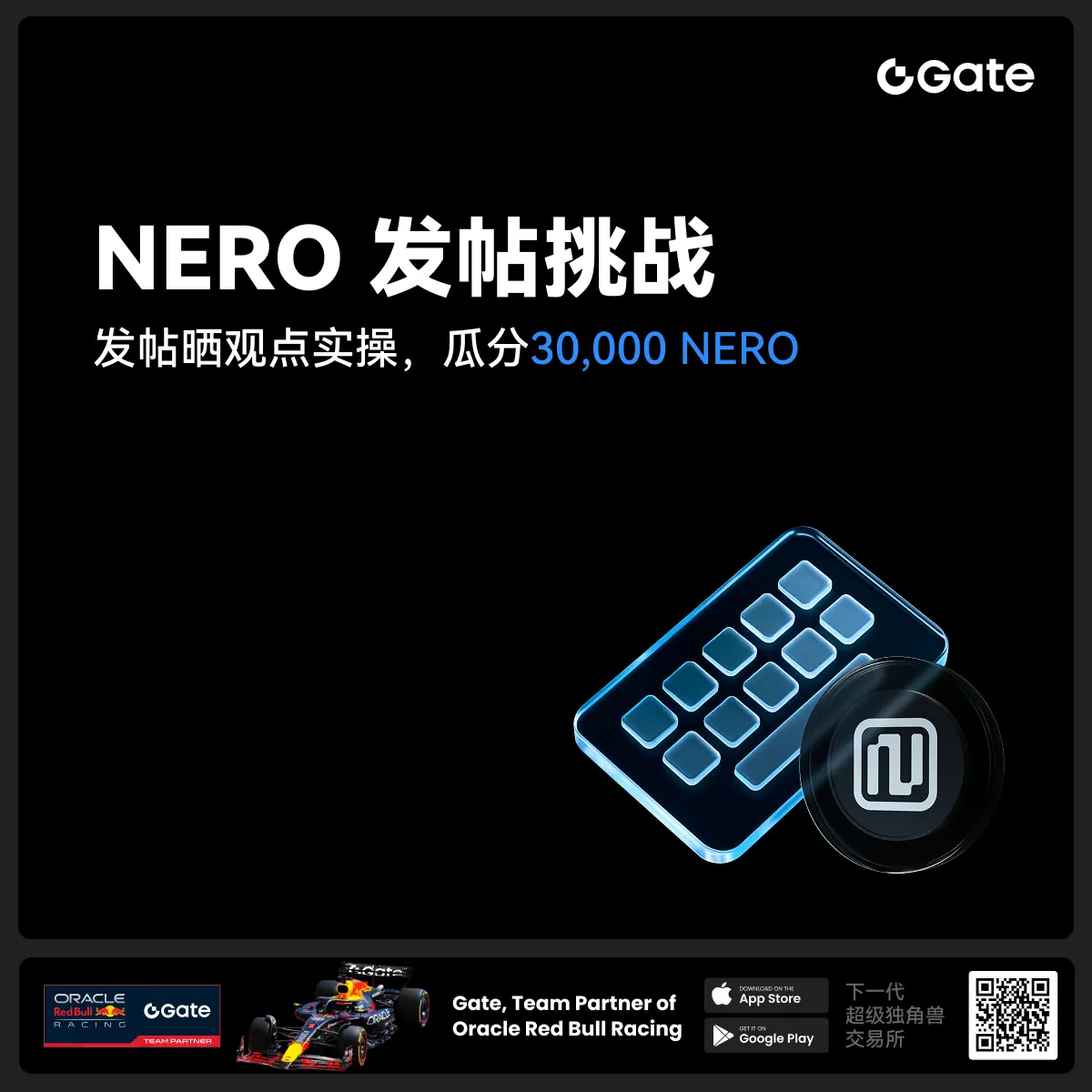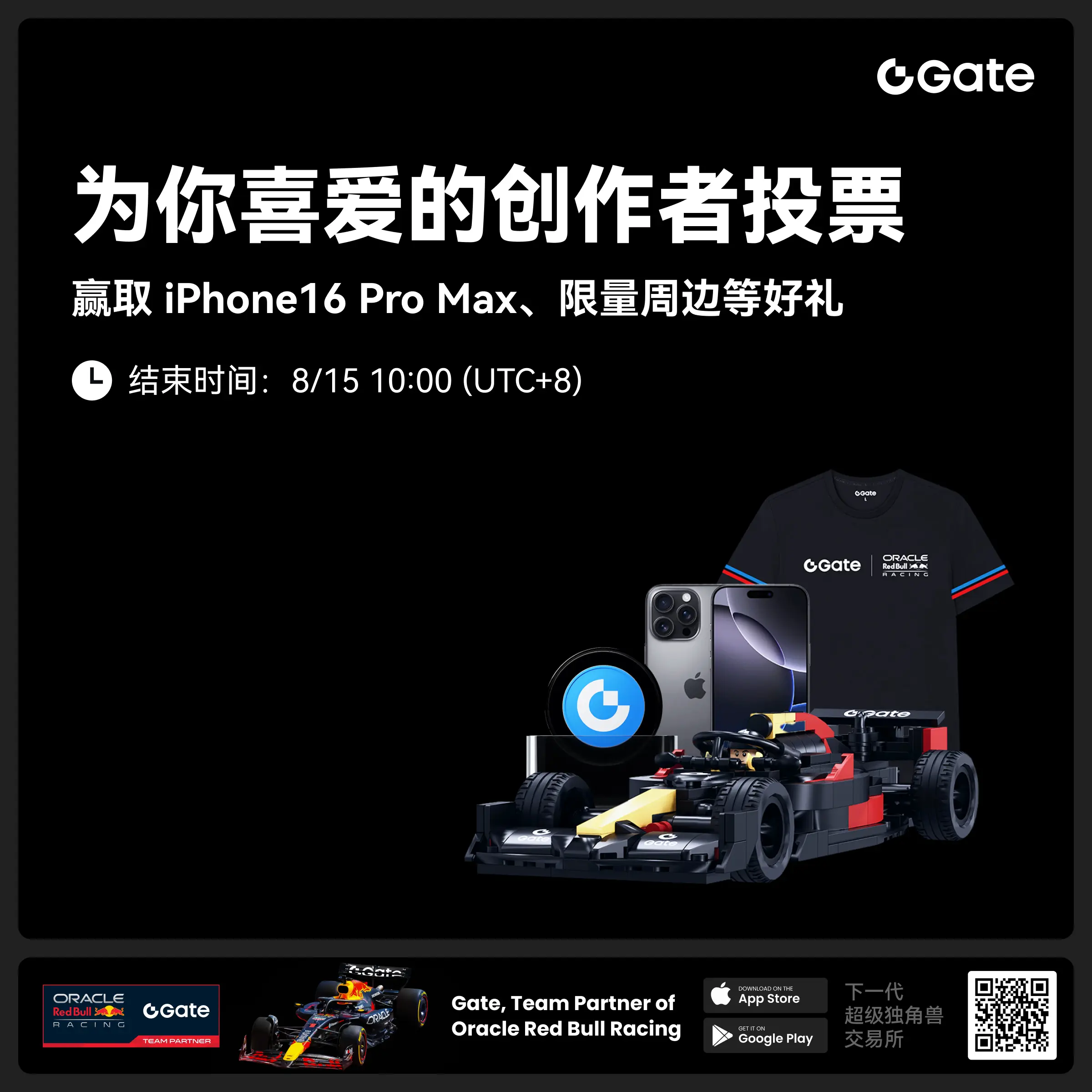- 话题1/3
64k 热度
45k 热度
59k 热度
9k 热度
22k 热度
- 置顶
- 🎉 #CandyDrop合约挑战# 正式开启!参与即可瓜分 6 BTC 豪华奖池!
📢 在 Gate 广场带话题发布你的合约体验
🎁 优质贴文用户瓜分$500 合约体验金券,20位名额等你上榜!
📅 活动时间:2025 年 8 月 1 日 15:00 - 8 月 15 日 19:00 (UTC+8)
👉 活动链接:https://www.gate.com/candy-drop/detail/BTC-98
敢合约,敢盈利
- 🎉 攒成长值,抽华为Mate三折叠!广场第 1️⃣ 2️⃣ 期夏季成长值抽奖大狂欢开启!
总奖池超 $10,000+,华为Mate三折叠手机、F1红牛赛车模型、Gate限量周边、热门代币等你来抽!
立即抽奖 👉 https://www.gate.com/activities/pointprize?now_period=12
如何快速赚成长值?
1️⃣ 进入【广场】,点击头像旁标识进入【社区中心】
2️⃣ 完成发帖、评论、点赞、发言等日常任务,成长值拿不停
100%有奖,抽到赚到,大奖等你抱走,赶紧试试手气!
截止于 8月9日 24:00 (UTC+8)
详情: https://www.gate.com/announcements/article/46384
#成长值抽奖12期开启#
- 📢 Gate广场 #NERO发帖挑战# 秀观点赢大奖活动火热开启!
Gate NERO生态周来袭!发帖秀出NERO项目洞察和活动实用攻略,瓜分30,000NERO!
💰️ 15位优质发帖用户 * 2,000枚NERO每人
如何参与:
1️⃣ 调研NERO项目
对NERO的基本面、社区治理、发展目标、代币经济模型等方面进行研究,分享你对项目的深度研究。
2️⃣ 参与并分享真实体验
参与NERO生态周相关活动,并晒出你的参与截图、收益图或实用教程。可以是收益展示、简明易懂的新手攻略、小窍门,也可以是行情点位分析,内容详实优先。
3️⃣ 鼓励带新互动
如果你的帖子吸引到他人参与活动,或者有好友评论“已参与/已交易”,将大幅提升你的获奖概率!
NERO热门活动(帖文需附以下活动链接):
NERO Chain (NERO) 生态周:Gate 已上线 NERO 现货交易,为回馈平台用户,HODLer Airdrop、Launchpool、CandyDrop、余币宝已上线 NERO,邀您体验。参与攻略见公告:https://www.gate.com/announcements/article/46284
高质量帖子Tips:
教程越详细、图片越直观、互动量越高,获奖几率越大!
市场见解独到、真实参与经历、有带新互动者,评选将优先考虑。
帖子需原创,字数不少于250字,且需获得至少3条有效互动
- 🎉 亲爱的广场小伙伴们,福利不停,精彩不断!目前广场上这些热门发帖赢奖活动火热进行中,发帖越多,奖励越多,快来GET你的专属好礼吧!🚀
1️⃣ #GateLaunchpad上线IKA# |IKA认购体验
在Gate广场带话题晒出你的IKA Launchpad认购体验,4位幸运分享者讲瓜分$200分享奖池!
详情 👉️ https://www.gate.com/post/status/12566958
2️⃣ #ETH冲击4800# |行情分析预测
大胆发帖预测ETH走势,展示你的市场洞察力!10位幸运用户将平分0.1 ETH 奖励!
详情 👉️ https://www.gate.com/post/status/12322403
3️⃣ #创作者活动第二期# |ZKWASM话题
在广场或推特发布与 ZKWASM 或其交易活动相关的原创内容,瓜分4,000枚ZKWASM!
详情 👉️ https://www.gate.com/post/status/12525794
4️⃣ #Gate广场征文活动第二期# |ERA话题
谈谈你对ERA的观点/体验,参与并推广活动,700 ERA大奖等你赢!
详情 👉️ https://www.gate.com/post/status/12361653
5️⃣ #MBG任务挑战# |MBG话题
分享你对MBG的洞察,积极参与和推广MBG活动,20位小 - 🎉Gate 2025 上半年社区盛典:内容达人评选投票火热进行中 🎉
🏆 谁将成为前十位 #Gate广场# 内容达人?
投票现已开启,选出你的心头好
🎁赢取 iPhone 16 Pro Max、限量周边等好礼!
📅投票截止:8 月 15 日 10:00(UTC+8)
立即投票: https://www.gate.com/activities/community-vote
活动详情: https://www.gate.com/announcements/article/45974
投资Meme的另一种盈利策略,通过当被动LP提升回报
8 个月前写了一篇关于 LP 成本的帖子,当时并没有引起太多关注,但昨天该帖的阅读量增加了三倍,所以本文用最新的例子来重新验证此方法。
前提:为了使此方法更好地发挥作用,您需要尽早布局 memecoin,并认可某个 memecoin 在中长期内具有一定优势,并且交易量要大。本文示例使用了 BUCK 代币。
正如上一篇帖子中提到的,您需要设置一个 v3 范围,范围的下限比代币的当前价格略低(通常约低于 25%),范围的上限要相对高一些(本文示例选择了约 100 BUCK/SOL 或约 2.5 美元/BUCK)。这样设置可以最大限度地减少您必须存入 LP 的 SOL 数量,并且会随着价格上涨,DCA(定期定额投资)会逐渐让您从 memecoin 转入 SOL。
下面谈谈无常损失(IL):此处转述 @AbishekFi 表述:
IL 是一种工具,而不是损失……衡量 LP 回报是一个热门话题,但实际上取决于您作为 LP 的偏好。您想要资产 A 还是资产 B?或者您是否愿意让您的头寸价值更高?
发生这种情况的唯一方法是您的代币对中的一个/两个资产升值,从而导致无常损失。但是,如果您对两个您不介意持有的资产进行 LP,那么您只是创建了一个同时产生费用的链上 DCA。」
正如 @shawmakesmagic 提到的,这对于代币开发者来说可能是一个非常有价值的工具,特别是对于具有持续成本的 AI 代理。为一代币对提供 v3 范围的流动性允许开发者使用费用来获利/支付费用,同时参与代币上涨。它会在长期内直接调整价值(取决于如何设置范围)。
为了证明这种方法是有效的,下面看一个 BUCK 简单示例,作者将其中分为初始准备金、持续无常损失、产生的费用和投资回报率。
昨天创建了一个 BUCK/SOL LP,提供 17 SOL 和 892,000 BUCK。如此做的原因是 Gamestop 运动具有广泛的吸引力,代币轮转速度快,波动性和交易量极高。
将范围设定为上限 100 BUCK/SOL(约 2.5 美元)到下限 8,500 BUCK/SOL(0.029 美元),比市场价格约 6900 BUCK/SOL 低约 20%,确保如果 BUCK 在短期内下跌,代币对不会超出范围。
这代表了总价值约为 4000 美元的 SOL 和 3 万美元的 BUCK(与稍后计算无常损失相关)。
10 小时后提取 LP,它产生了:
· 29.3 SOL 和 156,000 BUCK(费用)
· 25.1 SOL 和 841,456 BUCK(LP)
3.4 万美元存款在 10 小时内产生的 1.25 万美元费用大约相当于每日产生的费用的 88%。这是一个绝对令人难以置信的数字,即使没有复利,APY 也达到 32,120%。
这种情况下的无常损失,损失了约 50,000 个 BUCK 代币,这些代币被另外 8 个 SOL 所取代,从无常损失的角度来看,这些微不足道。
为了更清楚地说明:
· 存入(总计)= 17 SOL 和 892,000 BUCK
· 提取(总计)= 54.4 SOL 和 997,000 BUCK
· LP 的总利润 = 37.4 SOL 和 105,000 BUCK
很明显,池产生的无常损失被交易量产生的费用大大抵消。这在保持价格与极高交易量大致一致的代币对中得到了优化。
更疯狂的是,可以进一步优化:
· 将 LP 的费用等级从 1% 调至 2%,因为流动性更深,交易量更大
· 收紧初始范围的上限以进一步集中流动性,如果价格上涨,则随着时间的推移重新平衡范围
· 如果想在代币上涨后避免下跌(无往返交易),可以拉动您的 LP 并重新平衡范围的下限,使其再次达到当前底价的 20%,从而将您已 DCA 的 SOL 收入囊中。
在 meme 市场中,交易波动性需求极高,对价格的敏感度极低,将自己定位为被动 LP 是最大化回报的极佳策略。特别是对于持有时间较长、交易量较大的代币对,并且考虑到了对持有 SOL 还是 meme 不太确定的用户。
原文链接